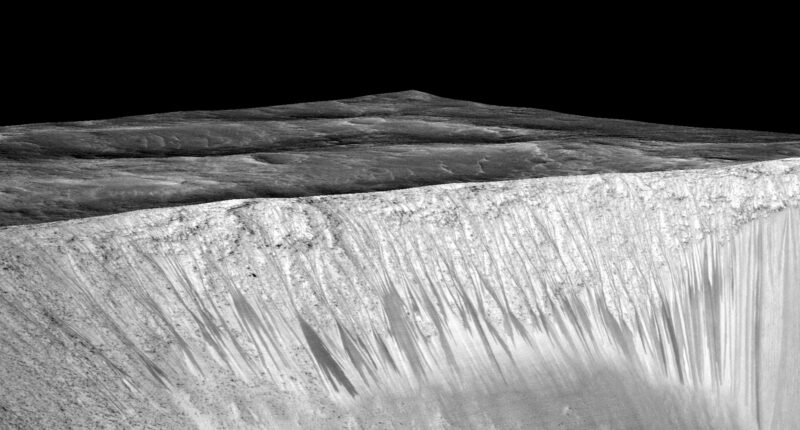SCIENTISTS in the US have crafted a machine that will help humans in the search for ‘hidden life’ on Mars.
Using artificial intelligence (AI), humans can use a machine to search for clues that humans keep missing.
An AI bot is far more effective at spotting biosignatures than humans, according to a new study from the not-for-profit SETI Institute, in Silicon Valley, California.
Biosignatures are any object or substance that provides evidence of past or present life.
Narrowing down the search to the scale of tiny habitats is a difficult task.
But the deep learning tool was able to boost the probability of detecting these signs of life by up to 87.5%, making it roughly nine times as effective as random searches for signs of life.


This made it “a powerful tool to expedite the search and detection of biosignatures in terrestrial analogues,” the study said.
To find this out, scientists trained the AI bot to detect biosignatures in Salar de Pajonales, a harsh Chilean environment that is as close to Mars as you can get on Earth.
This area is exposed to high levels of radiation, extremely cold temperatures and “exhibits features from both physical and biological processes highly relevant to biosignature search on Mars.”
Alongside her colleagues, Kimberley Warren-Rhodes, an astrobiologist at the SETI Institute, said: “In the search for biosignatures on Mars, there is an abundance of data from orbiters and rovers to characterise global and regional habitability, but much less information is available at the scales and resolutions of microbial habitats and biosignatures.
Most read in Tech
“Understanding whether the distribution of terrestrial biosignatures is characterised by recognisable and predictable patterns could yield signposts to optimise search efforts for life on other terrestrial planets.”
The team aims to build a “library” of data about how biosignature distribution on Earth that can be recreated in other worlds.
“Such a library could assist future Mars mission scientists in the selection of facies, mineral assemblages and structures with the highest chance of containing biosignatures,” the team said.
“Ultimately, we hope the approach will facilitate compilation of a databank of biosignature probability and habitability algorithms, roadmaps and models and serve as a guide for exploration on Mars.
“The framework may also have applications to other astrobiology targets, such as the surface of Titan, the plumes of Enceladus or the ice cover of Europa.”
Best Phone and Gadget tips and hacks

Looking for tips and hacks for your phone? Want to find those secret features within social media apps? We have you covered…
We pay for your stories! Do you have a story for The Sun Online Tech & Science team? Email us at [email protected]
This post first appeared on Thesun.co.uk









